Cash Loss: The Case For Change - Retailer Updates
In our annual update, the working group discussed their latest initiatives to reduce cash loss, many with losses less than 0.1% of cash takings while reducing the costs and complexities of handling cash, which for some of the retailers in the working group can still be up to 40% of all their transactions / sales.
What emerged were three current challenges, dilemmas and concerns
First, social engineering, in USA especially, the retailers reported the growing threat of cash scams, counterfeit currency and fraud through POS, especially gift cards and bank deposit requests.
Second, some retailers are now adding cash as a payment option for self checkouts [typically self-checkouts are launched as card only] with one reporting that their self checkout participation had grown from 70% to 80% with cash as a new payment option, however this then came with a corresponding increase in handling costs, with new and different types of risk levels.
Finally, in USA, a new problem related to cash is the planned withdrawal of the one cent coin, many retailers reported in the meeting how they are looking to plan to round cash totals, to update systems, educate customers, and to be guided by national laws and guidelines on the transition.
The working group then heard retailers share three broad initiatives that they are taking to prevent loss, reduce risk, improve controls and automate cash processes.
#1: Cash Automation & Smart Safes
This was the most mentioned, for some of the retailers, they had been in use for over 12 years while others had just deployed, others were on the edge of some trials.
Smart safes automatically count, validate, and securely store cash, providing stores and the home office real-time dashboards and provisional bank credits overnight. What the retailers shared was that smart safes can help a) lead to a dramatic reduction in theft and reconciliation errors, b) less manual handling of cash and reduced back-office workload and finally, c) improved accuracy of reporting through direct integration with POS and treasury systems.
#2: Closed-Loop or Recycler Systems
The goal behind these systems is to create a *fully closed cash loop**, removing human handling wherever possible. The recycling systems dispense and accept cash automatically, issuing floats to tills at the start of shifts, or as one retailer put it, loans, and then reconciling at the end.
The benefits include a) reducing internal theft and counting errors, b) providing continuous tracking of cash movement and finally, c) automation and improved store productivity
#3: Enhanced Data Dashboards & Reporting Tools
Finally, several retailers talked about improved visibility to the data on cash loss via dashboards and then the analytics was for them a major breakthrough. These dashboards ingested POS, treasury, and smart-safe data, to display, and to then allow for real-time monitoring and store-level accountability.
To help turn insight to action, several retailers sent “nudge” alerts or push notifications for store teams when anomalies were detected.
And one retailer shared how they had created a dedicated "cash loss tzar" role within their AP team to take ownership of the data, the dashboard and compliance and then working with the stores that were not delivering the right level of compliance and results.
In conclusion, the key insight from this meeting on cash losses was that that retailers’ innovation priorities are shifting from manual process improvement to automation, analytics, and AI-assisted controls, with a clear goal of creating a secure, low-touch, data-driven autonomous cash ecosystem.
As a next step, and based on the insights from this meeting, here are five questions you could ask about your business to assess your readiness to better manage cash loss, and bring down the costs associated with handling cash.
- Are we actively protecting our stores from cash scams and fraud?
- Do our teams know the latest social engineering tricks (e.g., fake “bank” calls, fake “head office” gift card requests, suspicious refund requests)?
- Do we train and re-train staff on counterfeit detection and POS fraud, especially on gift cards and cash refunds?
- Do we have a simple, clear “Stop & Check” procedure before approving unusual cash or gift card transactions?
- Have we fully costed and risk-assessed cash at self-checkout?
- If we accept cash at self-checkout, do we understand the extra costs (maintenance, jams, cash collection, repairs, extra staff time)?
- Have we reviewed how cash at self-checkout changes our risk profile (theft, abuse, collusion, sweet-hearting)?
- Do we regularly review self-checkout exception reports for cash (voids, overrides, high refunds, unusual patterns)?
- How ready are we for changes to cash (e.g., removal of the one cent coin)?
- Do we have a clear plan for rounding rules on cash transactions, aligned with national laws and guidance?
- Are our POS, pricing, and back-office systems ready to support rounding and any new tender rules?
- Do we have a simple customer and colleague communication plan (signage, FAQs, training) to avoid confusion at checkout?
- Are we using the right level of automation (smart safes / recyclers) for our cash volumes and risks?
- Do we know which stores would benefit most from smart safes (high cash, high variance, high theft risk, high labour cost)?
- Have we assessed closed-loop / recycler systems for busy or high-risk sites to remove manual cash handling where possible?
- Are our safes / recyclers integrated with POS and treasury so we get real-time visibility, clean reconciliations, and provisional credit?
- Do we treat cash loss as a data problem, not just a process problem?
- Do we have a single dashboard showing cash loss, variances, and trends by store, till, shift, and colleague?
- Do we use alerts or “nudges” to flag unusual cash patterns in real time (e.g., repeated small shortages, suspicious gift card use)?
- Is there a named cash loss owner (person or team) who reviews the data, follows up with stores, and drives continuous improvement?
Retailers can use these five questions as a quick readiness check, maybe as team exercise, using the scoring system “no” or “not sure” to identify convergent and divergent viewpoints within the team, that can lead to new actions and initiatives and pointers towards building a more secure, low-touch, data-driven cash ecosystem.
If you would like your retail business to be part of the working group, click here for the landing page and join our mailing list to get a weekly email on upcoming meetings and new research.
Nov 7, 2025
Main office
ECR Community a.s.b.l
Upcoming Meetings
Join Our Mailing List
Subscribe© 2023 ECR Retails Loss. All Rights Reserved|Privacy Policy
